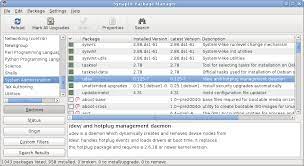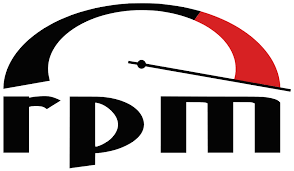Maximise System Security with ‘yum install update’ in RPM Linux
The Power of ‘yum install update’
When it comes to managing software packages on a Linux system, the ‘yum install update’ command is a powerful tool that can streamline the process of keeping your system up-to-date and secure.
Yum, which stands for Yellowdog Updater Modified, is a package management utility commonly used in Red Hat-based Linux distributions. The ‘install’ option allows you to add new software packages to your system, while the ‘update’ option enables you to upgrade existing packages to the latest versions available.
By running ‘yum install update’, you can ensure that all installed packages on your system are not only current but also patched with the latest security updates. This helps protect your system from vulnerabilities and ensures optimal performance.
One of the key benefits of using ‘yum install update’ is its simplicity and efficiency. With just a single command, you can check for updates, download them from repositories, and apply them to your system without having to manually search for each individual package.
Furthermore, yum resolves dependencies automatically, ensuring that all required libraries and components are installed along with the updated packages. This simplifies the update process and reduces the risk of compatibility issues.
Overall, incorporating ‘yum install update’ into your regular system maintenance routine is essential for keeping your Linux distribution secure, stable, and up-to-date with the latest features and improvements. Take advantage of this powerful command to ensure that your system is always running at its best.
Streamlining System Security and Performance: 8 Benefits of Using ‘yum install update’
- Efficiently updates all installed packages with a single command
- Automatically resolves dependencies to ensure smooth updates
- Simplifies the process of keeping your system secure and up-to-date
- Reduces the risk of vulnerabilities by applying the latest security patches
- Streamlines software management on Red Hat-based Linux distributions
- Helps improve system performance by updating to the latest versions of packages
- Minimises compatibility issues by managing package updates effectively
- Enhances user experience through a straightforward and convenient update process
Potential Drawbacks of Using ‘yum install update’: A Closer Look at Common Challenges
- 1. Dependency conflicts may arise during updates.
- 2. Updates can sometimes introduce new bugs or issues.
- 3. Running ‘yum install update’ requires administrative privileges.
- 4. Large updates may consume significant bandwidth and storage space.
- 5. In rare cases, updates may break compatibility with certain applications.
- 6. Some updates may require system restarts to take effect, causing downtime.
- 7. Manual intervention may be needed if conflicts occur during the update process.
Efficiently updates all installed packages with a single command
One of the key advantages of using ‘yum install update’ is its ability to efficiently update all installed packages on a Linux system with just a single command. This streamlined approach simplifies the update process by eliminating the need to manually check for and update individual packages one by one. By running ‘yum install update’, users can ensure that their system is kept current and secure, saving time and effort while maintaining the overall health and performance of their Linux distribution.
Automatically resolves dependencies to ensure smooth updates
One of the standout advantages of using ‘yum install update’ is its ability to automatically resolve dependencies, guaranteeing a seamless update process. By handling dependencies efficiently, this feature ensures that all required libraries and components are installed alongside the updated packages. This not only simplifies the updating procedure but also minimizes the risk of compatibility issues arising from missing or outdated dependencies. With ‘yum install update’, users can enjoy smooth and hassle-free updates, knowing that their system is well-equipped with all the necessary components for optimal performance.
Simplifies the process of keeping your system secure and up-to-date
The ‘yum install update’ command simplifies the process of maintaining system security and ensuring it stays up-to-date by automating the detection, download, and installation of the latest software updates. This proactive approach helps users easily address vulnerabilities and apply necessary patches, ultimately enhancing system security and reducing the risk of potential threats. By streamlining these tasks into a single command, ‘yum install update’ offers a convenient and efficient solution for users to keep their systems secure and operating at peak performance levels.
Reduces the risk of vulnerabilities by applying the latest security patches
By utilising ‘yum install update’, Linux users can significantly reduce the risk of vulnerabilities within their system by effortlessly applying the latest security patches. This proactive approach ensures that potential security loopholes are promptly addressed, enhancing the overall resilience and robustness of the system against potential cyber threats. Regularly updating software packages through ‘yum install update’ is a fundamental step towards maintaining a secure and stable Linux environment, safeguarding sensitive data and ensuring a smooth user experience.
Streamlines software management on Red Hat-based Linux distributions
The ‘yum install update’ command serves as a valuable tool that streamlines software management on Red Hat-based Linux distributions. By seamlessly integrating the installation of new packages with the updating of existing ones, this command simplifies the process of keeping your system current and secure. With just one command, users can efficiently manage software updates, ensuring that their system is always equipped with the latest features and security patches without the need for manual intervention.
Helps improve system performance by updating to the latest versions of packages
Updating to the latest versions of packages through ‘yum install update’ is a crucial step in enhancing system performance. By ensuring that software components are up-to-date, users can benefit from improved functionality, bug fixes, and performance enhancements that come with newer versions. This proactive approach not only optimises system stability but also allows for the utilisation of new features and improvements that can contribute to a smoother and more efficient user experience.
Minimises compatibility issues by managing package updates effectively
By effectively managing package updates, ‘yum install update’ minimises compatibility issues that can arise when updating software on a Linux system. The command automatically resolves dependencies, ensuring that all necessary libraries and components are updated along with the main packages. This streamlined approach helps prevent conflicts between different versions of software components, resulting in a smoother and more reliable update process.
Enhances user experience through a straightforward and convenient update process
The ‘yum install update’ command enhances the user experience by providing a straightforward and convenient update process for Linux systems. With just a single command, users can easily check for updates, download them from repositories, and apply them to their system without the need to navigate complex menus or search for individual packages. This streamlined approach simplifies the update process, saving time and effort while ensuring that the system remains secure and up-to-date with the latest software versions.
1. Dependency conflicts may arise during updates.
During updates using ‘yum install update’, one potential drawback to be mindful of is the possibility of dependency conflicts. These conflicts can occur when a new package being installed or updated requires a different version of a library or component than what is currently installed on the system. This mismatch can lead to errors or issues with software functionality, as the system may struggle to resolve these conflicting dependencies. It is important for users to carefully review any error messages related to dependency conflicts that arise during updates and take appropriate steps to address them, such as manually resolving the conflicts or seeking assistance from the community forums or documentation.
2. Updates can sometimes introduce new bugs or issues.
One potential drawback of using ‘yum install update’ is that updates can occasionally introduce new bugs or issues to the system. While updates are intended to improve software functionality and security, there is always a risk that a new update may inadvertently cause compatibility issues with existing software or hardware configurations. This can lead to unexpected errors, crashes, or performance issues that may disrupt normal system operation. It is important for users to exercise caution when applying updates and to regularly monitor system performance after updating to quickly address any newly introduced bugs or issues.
3. Running ‘yum install update’ requires administrative privileges.
When considering the drawbacks of using ‘yum install update’, one significant con is that running this command necessitates administrative privileges. This means that users must have root access or sudo permissions to execute the command successfully. While this security measure is in place to prevent unauthorised modifications to the system, it can be inconvenient for regular users who do not have the necessary permissions. As a result, relying on ‘yum install update’ may limit the ability of non-administrative users to manage software updates on their own, requiring them to seek assistance from system administrators for routine maintenance tasks.
4. Large updates may consume significant bandwidth and storage space.
One drawback of using ‘yum install update’ is that large updates can consume a considerable amount of bandwidth and storage space. When updating multiple packages or installing new software, the size of the updates can quickly add up, leading to a heavy demand on network resources and disk space. This can be a concern for users with limited internet connectivity or those with restricted storage capacity on their systems. It is important to consider the potential impact on bandwidth usage and available storage before initiating extensive updates using ‘yum install update’.
5. In rare cases, updates may break compatibility with certain applications.
In rare cases, one potential drawback of using ‘yum install update’ is that updates may inadvertently break compatibility with certain applications. When new versions of packages are installed, there is a possibility that changes or enhancements made to the software could lead to conflicts with existing applications, causing them to malfunction or become incompatible. This issue highlights the importance of thorough testing and system backups before performing updates, especially in environments where specific applications must remain stable and functional at all times.
6. Some updates may require system restarts to take effect, causing downtime.
One drawback of using ‘yum install update’ is that certain updates may necessitate system restarts to fully implement the changes, leading to potential downtime. This interruption in service can be inconvenient, especially for systems that need to remain operational around the clock. Users should be prepared for these periodic restarts when applying updates through ‘yum install update’ to minimize any disruption to their workflow or services.
7. Manual intervention may be needed if conflicts occur during the update process.
During the update process using ‘yum install update’, one potential drawback is the possibility of conflicts arising between packages. In such cases, manual intervention may be required to resolve these conflicts and ensure a successful update. This can sometimes lead to delays in the update process and may require users to have a good understanding of package dependencies and system configurations in order to address the conflicts effectively. Despite this challenge, being prepared to handle conflicts that may arise during updates can help users maintain a smooth and efficient software management experience on their Linux system.






